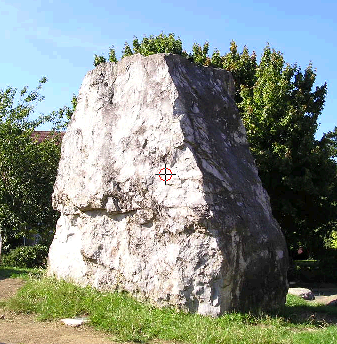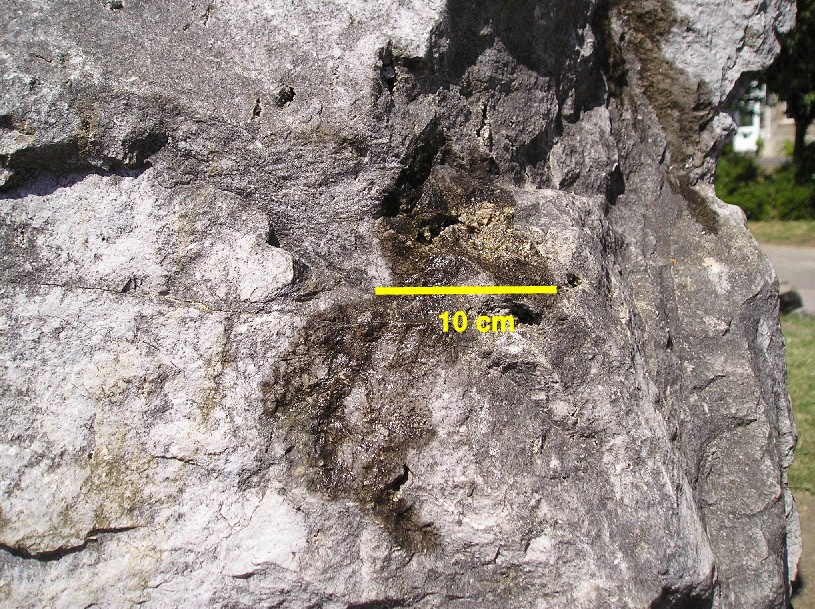
Dolomite

| Belgium - dolomitic limestone |
ECOS, Frome, Somerset
European Community^ Of Stone |
| Home | Geology in West Country blog | Contact us |

Dolomite |

|
| About the rock: From Belgium came this huge 13 tonne block of grey stone. It seems to have much in common with local Mendip Carboniferous Limestone and the fossils demonstrate its Carboniferous age. The corals, the tiny perforate discs which are crinoid ossicles and the thin-shelled brachiopods effectively demonstrate normal limestone-forming conditions which prevailed at the time of origin, about 300 million years ago when this part of Europe was close to the equator. But the rock is pitted with cavities and vein surfaces show crystals of dolomite. If the stone were tested with weak hydrochloric acid, there would be a disappointing lack of reaction, or at best, only mild effervescence. The original carbonate has been subsequently altered to the double carbonate, a process which can take place soon after the lime mud has been deposited, or at a later date when limestones are involved in the introduction of mineral veining. This rock is a dolomite, a dolomite which originated as a normal bioclastic limestone and was later ‘dolomitised’, i.e. changed from calcium carbonate to calcium magnesium carbonate. Dolomitisation is accompanied by a reduction in volume of the rock and so there are often mineral veins in the remaining spaces. | Place of origin: The rock comes from the massive cliff outcrops which occur in the Meuse Valley around Namur, a setting which matches the familiar Avon Gorge or any of the Mendip canyons. These outcrops in the Meuse Valley are the world standard for the Tournaisian time period of the Carboniferous era. |